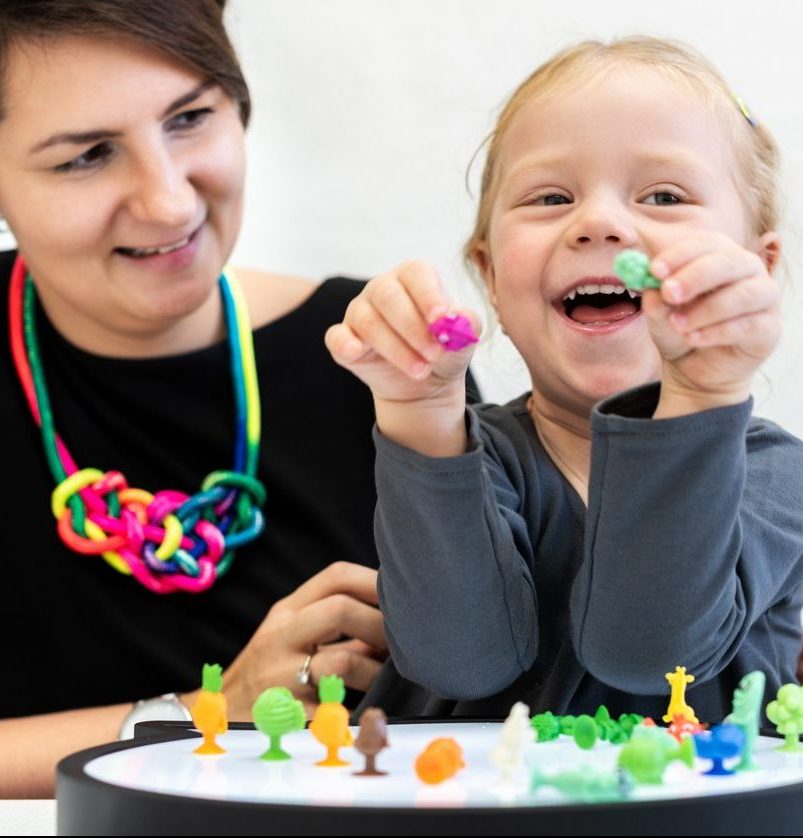
By Elyse, Occupational Therapist, Clinical Education Lead
KidsCare Home Health, Pediatric Therapy
As therapists, we are constantly challenging our clients so that we can help them learn and grow. Doing this can also sometimes mean that we are met with resistance and refusal to participate. When children respond with these refusal behaviors, our minds may not always go to the “just right challenge” as playing a role; but it just might.
Clients refusing to participate in an activity may be feeling overwhelmed by a challenge that is too great for them. As the therapist, we have selected activities to help the child improve their skills; so it can be confusing and frustrating when we can’t get them to engage.
Setting them up for success
When we use the “just right challenge” we set the client (and ourselves) up for success. We can do this by making sure we are aware of what the child’s mastered level in the activity is and take them just one step above that. This is where we find the “just right challenge”. The activity should feel challenging enough that it’s engaging, but not so challenging that it is discouraging.
When a child is presented with a “just right challenge”, they are likely going to be successful with the activity and feel motivated to continue.
Adjusting our activities to make it the “just right challenge”
How exactly do we take our planned activity and adjust it so that we present the “just right challenge”? There are a variety of ways to do this.
- Decrease the number of times you’re asking the child to do the activity (instead of saying clean all of this up, you adjust it and ask them to pick up 3 things).
- Decrease the amount of time the child has to complete an activity for.
- Chain the activity so that they either only do the first step or complete the last step.
- Take turns with them, so they get breaks throughout.
- Add in visual cues such as picture instructions.
- Add in physical guidelines such as raised line paper.
- You may need to adjust their physical environment such as providing more supportive seating or a space that has reduced visual input.
- If a task has several steps, you can break that task down into its component parts and have the child start by just learning to complete one step of that task. From there you can slowly add on as they master each step.
There is no one way to reach a “just right challenge” as it will be unique to the child and to the activity you are using. Next time you encounter a client refusing to participate, give it a try!















